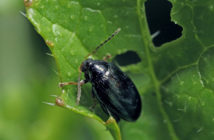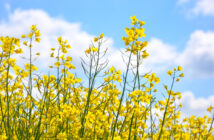On the back of attractive 2016 contract premiums and 2015 yields near the very top of the ‘double low’ market, High Oleic, Low Linolenic (HOLL) winter rape plantings have reached an all-time high across the country this season according to the latest round of the industry-leading Kleffmann Group WOSR AMIS® farmer input panel
Results from the 400-strong panel, carefully selected to be representative of British growers and interviewed from December 2015, show HOLL varieties occupying no less than 7% of the current winter OSR area – up from just 2% in 2014/15.
They also underline the extent to which HOLL variety performance has improved in recent years, with the two varieties making up the lion’s share of current plantings – V316OL and V295OL – delivering gross outputs of 4.76 t/ha and 4.65 t/ha respectively last harvest.
This puts them hard on the heels of market-leading ‘double low’ DK Extrovert which averaged 4.93 t/ha and comfortably ahead of all but two of the other 13 most widely-grown varieties in 2014/15 (Figure).
“Our HOLL hybrids are certainly living up to their promise of output parity with the best of ‘double low’ varieties,” commented DEKALB NW Europe marketing lead, Deryn Gilbey.
“Class-leading output is especially valuable in helping growers cope with current rapeseed markets. After all, at typical crop input levels every quarter of a tonne of extra output drives winter rape production costs down by around £10/t.
“With HOLL hybrids performing at least as well as the vast majority of the most popular ordinary ‘double lows’ it’s becoming increasingly difficult to find a reason not to grow them. All the more so as well over 90% of all the crop samples pre-movement tested by our laboratory from the past harvest were within specification for both linolenic and oleic oil levels to qualify for flat rate HOLL premiums of up to £25/t on top of oil bonuses.
“HOLL rape is clearly delivering for growers in both maximising market returns and minimising unit production costs. This and the assurance of fixed premiums provided by contract-based production means it really isn’t surprising that this season’s plantings are so markedly up on 2015. Nor that grower interest for the coming season is so high.”
Figure: 2015 harvest performance of the most widely grown ‘double low’ OSR varieties
(all those with a market share of 3% or more)

Source: Kleffmann Group WOSR AMIS® farmer input panel – February 2016


